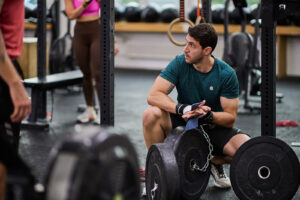
Too much training is not the same as too much fitness.
Let’s clear up a common misconception:
You can’t be too fit.
Fitness is your body’s capacity to handle physical, mental, and emotional challenges. It allows you to lift, move, play, recover, and thrive—at every age and stage of life. The fitter you are, the more freedom and resilience you have. More fitness is always better. It’s always useful.
But there is such a thing as too much training.
And that’s where people often get it wrong.
Fitness is the goal. Training is the method.
Fitness is the outcome. Training is the tool. But tools are only effective when used with precision.
Training is a stressor. It needs to be applied in the right dose, at the right intensity, with adequate recovery. Otherwise, the stress accumulates and starts working against you. That’s too much training—and it’s more common than you’d think, especially among those chasing fast results or trying to outwork poor habits.
Ironically, too much training often leads to less fitness: fatigue builds, progress stalls, and the body resists adaptation.
You do need to train a lot—to be truly fit
Let’s be honest: becoming optimally fit—your personal highest sustainable level of strength, endurance, power, and health—takes serious work. Truly fit people do train a lot, and they do it consistently, year after year.
What they don’t do is waste training. They don’t stack junk volume on top of poor sleep and bad recovery. They don’t train blindly or emotionally. They follow structure, they manage effort, and they rest with purpose.
You cannot cheat your way into fitness with minimal effort.
Two hours a week won’t make you fit
Two hours a week might help you not be unfit. It’s a step up from sedentary. It might help maintain some basic function, reduce health risks, and keep you moving. And if that’s all your life can realistically handle right now—great. Do it.
But don’t mistake it for a pathway to true fitness.
Optimal fitness—where your body feels powerful, pain-free, energetic, and capable of doing hard things—demands more. Not endlessly more, but enough to challenge and adapt. You can’t fast-track your goals with shortcuts. And you can’t reach the summit without climbing.
Too much training = poor returns
More is not always better. In fact, when it comes to training, too much often means:
- Training hard without recovery
- Skipping sleep to fit workouts in
- Pushing past fatigue signals
- Measuring effort by time spent, not work done
That’s not what the fittest people do. That’s what the frustrated ones do.
Fitness is earned through consistent, intelligent training, not just endless hours.
The takeaway
There is no such thing as too much fitness. But there is absolutely such a thing as too much training.
Getting fit takes effort—and more than most people want to admit. But effort alone isn’t enough. The best results come from the right amount of training, done with focus, purpose, and long-term vision.
Train enough to grow.
Not so much that you stall.
And never settle for “not unfit” if you want to see what you’re really capable of.




